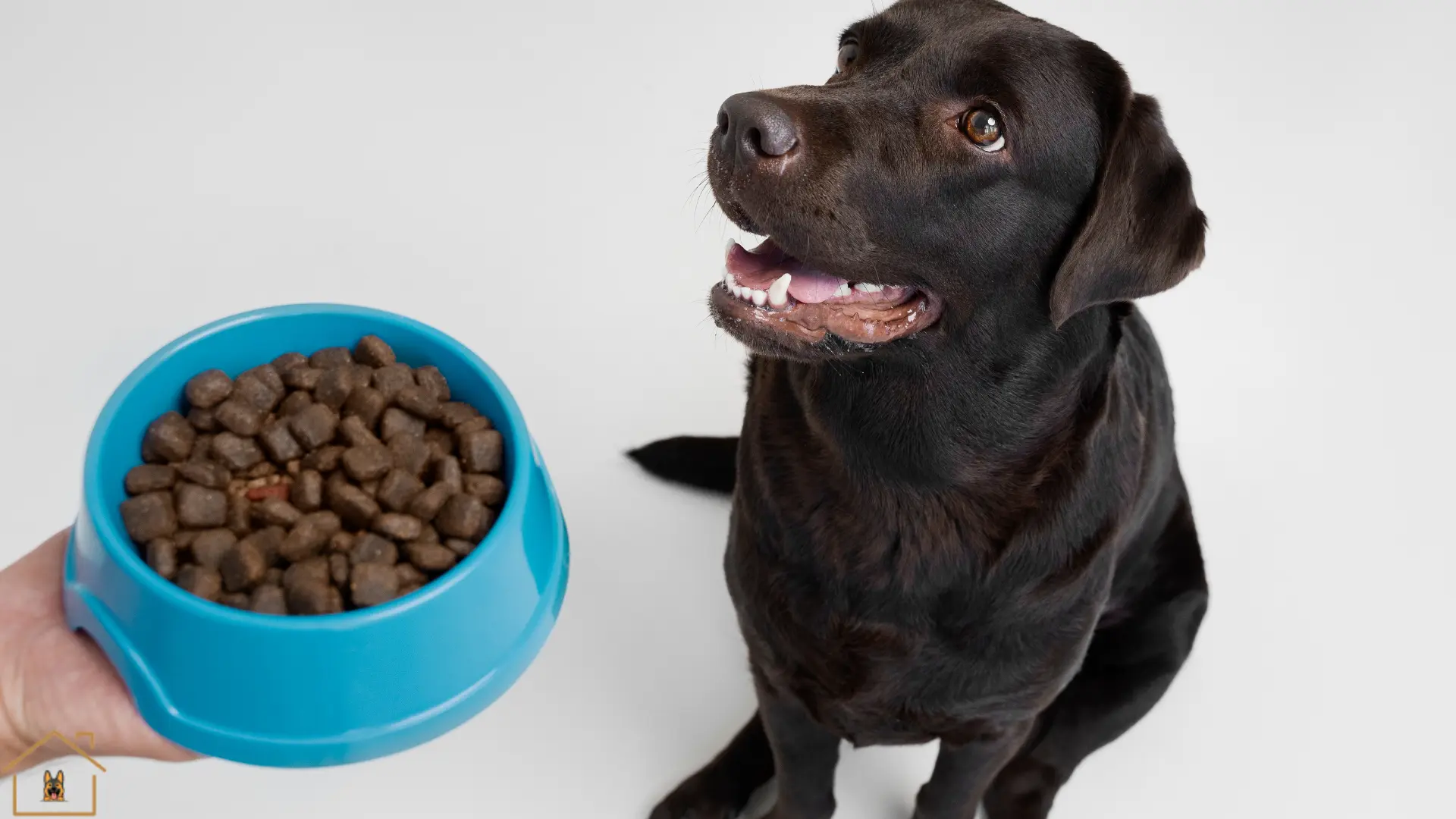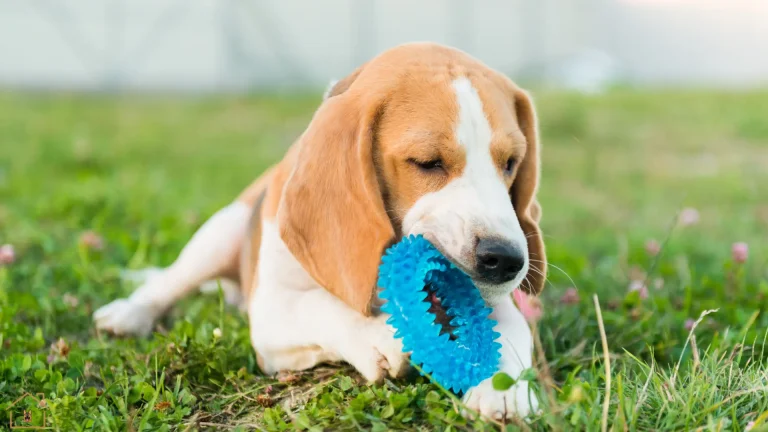How to Transition Your Dog to a New Diet Safely
Your pet’s nutritional needs evolve as they go through different life stages, so getting their diet right is not a one-and-done process. Be it moving from puppy food to adult food, addressing food allergies, or simply upgrading to a higher-quality formula, you will find yourself adjusting or changing your pet’s diet at different ages and for different reasons. Given that our canine companions have sensitive tummies, it’s crucial to handle the dog diet transition carefully.
Switching foods too quickly or abruptly is one of the common dog food transition mistakes that often results in an upset stomach, vomiting or diarrhea. That’s why you need a solid plan for slowly incorporating any new food into your dog’s diet, preferably over the course of a week, or more if needed. By taking your time, you give your pup’s digestive system a chance to adjust, keeping your dog happy and healthy during the change.
Let’s talk in greater detail about what to expect when switching dog food, the importance of gradual food change for dogs, how to know your dog needs a diet upgrade and how to make it happen.
Signs Your Dog Might Need a Diet Change
As they say, if ain’t broke, don’t fix it. So, if your pet is thriving on their current diet, there is no reason to meddle with it. Now, this might lead you to wonder, “When should I change my dog’s food?” Here are some signs to watch out for:
- Digestive upsets: Frequent vomiting, diarrhea, gas or an upset stomach after meals can indicate a problem. Repeated stomach issues aren’t normal for a healthy dog and can be symptoms of bad dog food reaction or that your pet’s current diet isn’t serving them well . Read more about common types of cysts in dogs
- Dull coat or skin issues: A shiny, full coat is a sign of good nutrition. If your dog’s coat looks dry or dull, or if they’re scratching, licking or have inflamed skin, it could mean their diet is lacking something or they have an intolerance
- Weight changes: Unexpected weight loss or gain is a big clue. Dogs may shed pounds if they eat less of a diet they don’t like, or if the food quality is poor. Conversely, a sudden weight gain might suggest too many calories or not enough exercise. Either way, unexplained weight swings are worth investigating
- Low energy or mood changes: If your normally playful dog becomes unusually sluggish, tired, or “down,” their diet could be the reason. It can be a subtle clue that something in the food isn’t agreeing with them
- Allergy signs: Chronic ear infections, excessive licking, or intense scratching often point to food allergies or sensitivities. This often means that something in your dog’s diet isn’t agreeing with them
By staying observant and noting these symptoms of bad dog food reaction, you’ll know when it’s time to look for a new food.
Understanding the Risks of Abrupt Diet Changes
When you recognize that your pet’s diet needs a change, it can be tempting to start them off on a new, promising diet right away. After all, when you see that the current diet is causing them discomfort, you’d want to eliminate it. However, an abrupt dog diet transition is risky.
Dogs thrive on routine, and a sudden switch can shock their digestive system. Experts warn that an abrupt change often leads to gastrointestinal upset, causing vomiting, diarrhea, bloating or loss of appetite are common. Renowned canine nutritionist Dr. Lisa Weeth, DVM, DACVIM (Nutrition) says, “if your dog is “throwing up after new food” or has an “upset stomach after food change,” it’s almost always because the transition was too fast. Gradual food change for dogs is a must to avoid these issues.”
So, instead of stressing your dog’s gut, mix in a little of the new food at a time. This gentle approach protects your dog’s comfort and overall gut health.
Step-by-Step Guide to a Safe Dog Diet Transition
For a smooth dog diet transition, you need a clear, gradual plan, typically spread over a 7-day period. Here is broad 7-day schedule for switching dog food safely that you can adapt to your pet’s needs:
- Day 1–2: Feed 25% new food and 75% old food. In each meal, mix one part new food with three parts of the old diet
- Day 3–4: Feed 50% new, 50% old. Half the bowl is now new food, half is the old.
- Day 5–6: Feed 75% new, 25% old. Three-quarters of the meal is new food, with just a bit of the old for familiarity
- Day 7+: Feed 100% new food. By day 7, your dog should be fully on the new diet
According to the American Kennel Club, this kind of one-week mixing schedule helps prevent refusal or digestive upsets. While following these ratios, watch your dog closely. Check the stool consistency each day. It should stay mostly firm. Slight softness at first is normal, but any “major changes” like persistent diarrhea signal you should pause and slow down.
Also, note your dog’s appetite and behavior. If they’re still eating well and seem happy, proceed as planned. If your dog refuses meals, vomits, or seems uncomfortable, slow the transition. You can expand each phase by a day or two. If these concerning symptoms persist, you need to halt the transition and seek medical attention.
Monitoring Your Dog During the Transition
Knowing how to transition your dog to a new diet isn’t enough—you also need to know what to expect when switching dog food. In the first couple of days, you might see very mild changes like a slightly softer stool or a bit of extra gas as their gut flora adjusts. These normal variations usually clear up quickly.
Keep a close eye on energy levels and eating habits. If your dog is eating normally and seems bright-eyed, things are likely fine. However, if you notice persistent digestive issues, low energy, or coat changes, these could be signs your dog’s food isn’t healthy and may suggest the new diet isn’t working well.
If stools start to get runny or if your dog strains to relive themselves, consider slowing the transition. You also need to watch for warning signs that dog diet transition isn’t working well,
- Persistent diarrhea
- Repeated vomiting
- Refusal to eat
- Extreme lethargy
These go beyond what’s expected, and your dog would likely benefit from a vet’s input or a slower approach. In most cases, just a day or two of mild upset is all it takes for the new diet to settle in. By tracking how your dog responds, you’ll know how to know if the new dog food is working. Stable weight, solid stools, a shiny coat and happy demeanor are the proof of a successful transition.
Tips for Picky Eaters or Dogs with Sensitive Stomachs
Your pup’s digestive track accepting their new food is one part of the challenge. If your pet is a picky eater, you may also find yourself wondering, “How to get my dog to eat new food,” a lot. Here are a few smart tips and tricks to handle both these dilemmas:
- Add a tasty topper: How to get my dog to eat new food, you ask? Mix in a small amount of plain cooked chicken, low-sodium chicken/beef broth, pumpkin, bone broth, or another dog-safe topper. This makes the meal smell and taste more appealing
- Warm up the food: Just like us, many dogs prefer warm meals. Try adding a splash of warm water or briefly microwaving the food to room temperature. Slightly warming the meal increases its aroma and flavor, which can entice even finicky dogs to eat
- Feed after exercise and on schedule: Take your dog for a short walk or play session before mealtime. A bit of exercise builds their appetite. Then stick to consistent feeding times each day. Dr. Weeth recommends serving meals on a regular schedule and only leaving the bowl down for 10–15 minutes. “This encourages your dog to eat when it’s offered,” she says
- Small portions, no free-feeding: If your dog pushes the food aside, try offering smaller portions more frequently. Avoid free-feeding or too many treats. A dog full of snacks is often too picky about their meals
When to Consult a Veterinarian
While most diet changes can be handled at home, some situations call for professional advice. Such as:
- If you’re trying to figure out how to know if the new dog food is working, a vet’s insight can be valuable
- If your dog is very young, old, or has health issues, check with your vet before making big changes.
- Dogs in critical life stages, such as pregnant or nursing dogs, need extra caution
- If your dog shows severe or persistent symptoms during the transition, don’t hesitate to call the vet
Trust your instincts. If anything seems seriously wrong or if you’re ever in doubt,especially with a sick or special-needs dog, consult your veterinarian. They can ensure any diet change is safe and appropriate for your pup
Common Mistakes to Avoid When Switching Dog Food
A new diet can be a significant shift for your pet. To make sure you get it right, here is a quick round up of the common dog food transition mistakes to avoid:
- Switching too quickly: Dumping all the old food and immediately feeding 100% new food is a recipe for digestive upset. It can cause gas, vomiting or diarrhea
- Overfeeding or underfeeding: Make sure you’re offering the right portion size. Too much food can lead to weight gain and stomach upset. Too little can cause excessive hunger or nutrient deficiency. Check the feeding guidelines or consult a vet or a nutritionist to zero in on the correct quantity
- Ignoring the nutrition label: Don’t assume all foods are equivalent. Ensure that your dog’s new diet is complete,balanced and appropriate for their life stage. A common oversight is not checking protein, fat, or fiber content
- Not observing your dog: Failing to monitor your dog’s reaction to the new food, such as their appetite, stool, and behavior, is a big mistake. Keep an eye on changes each day so you can respond if anything seems off
- Changing other items at once: Avoid simultaneously introducing new treats or chews when you switch food. Changing too many things at once can make it hard to know what’s upsetting your dog
Takeaway
Safe dog diet transition requires you to work with your dog, taking into consideration how they respond to the change. Go slowly, and watch your pup closely. Check their stool, appetite, energy and overall happiness each day. Every dog is unique, so be ready to adapt the plan, even if it means extending a transition phase or reevaluating it altogether, based on how they respond. And remember: when in doubt, err on the side of caution because the downside of rushing a diet change is unpleasant for everyone. With patience and care, you’ll help your dog adjust comfortably. A successful transition keeps them thriving and lets you enjoy the rewards of knowing they’re on a diet that suits them. For more balanced meal ideas, explore these homemade dog food recipes.







